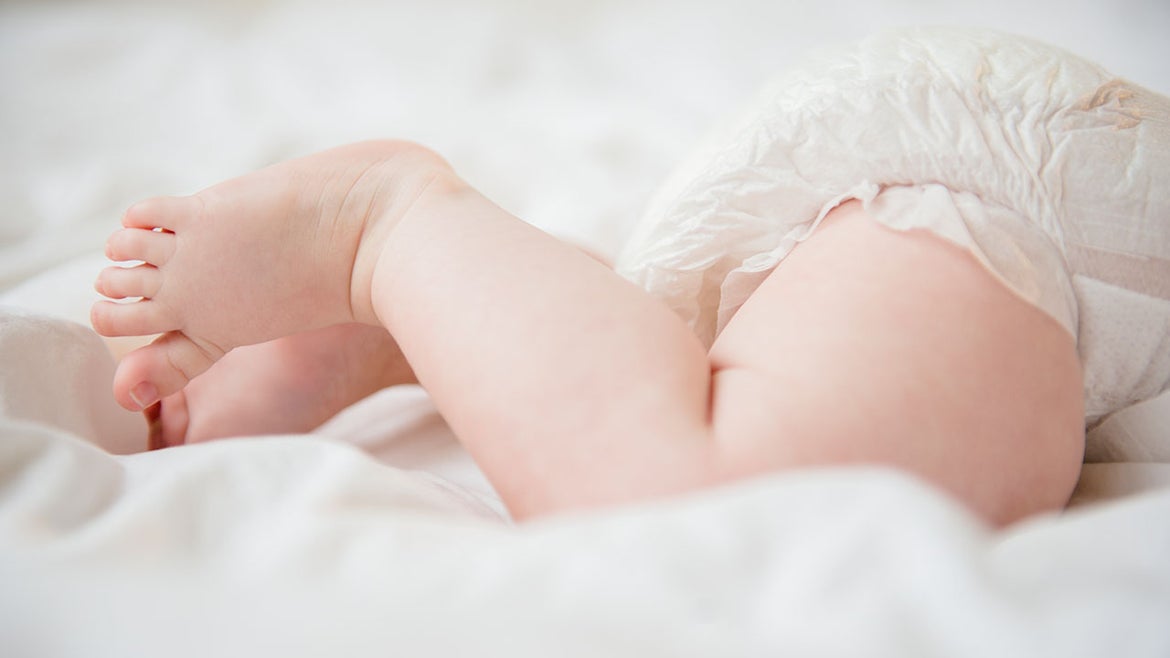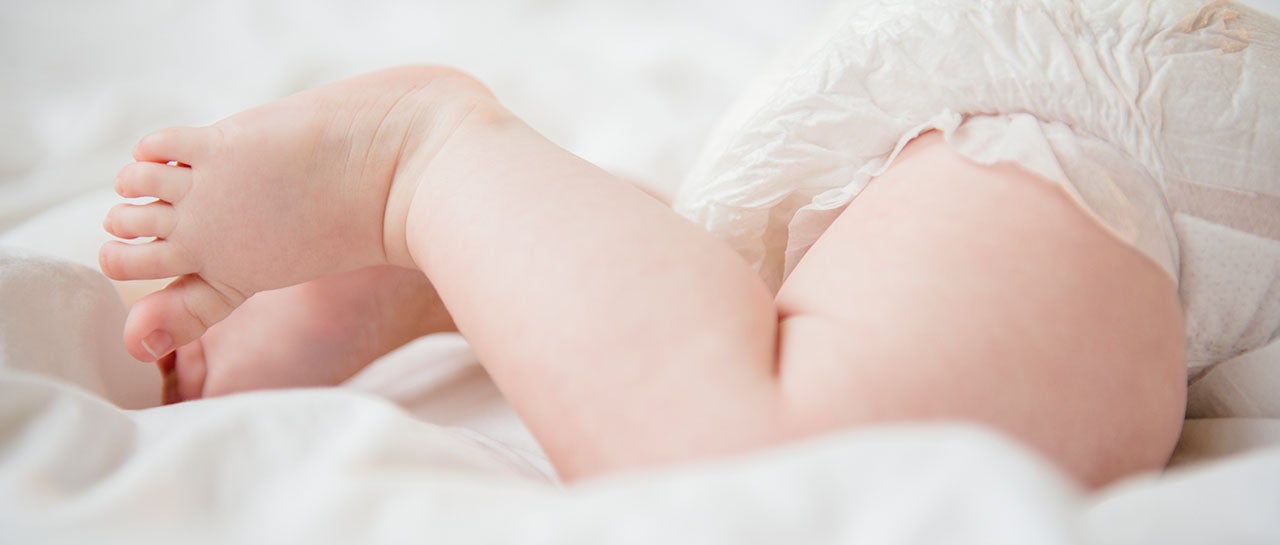Affording enough diapers to help keep a child's skin clean, dry and healthy is not always easy. One in three families struggle to do so in the U.S., where disposable diaper prices have risen about 22% over the past year.
If finding ways to make sure one’s child did not go without a clean diaper when it was nearly impossible to afford them was an art, Billie Lovelace would be a maestro.
The Illinois mother is an expert at planning out the number of diapers she may need to use in a day, in cutting coupons to afford the pricier, name-brand diapers that last longer, and in utilizing the various brands’ savings programs.
Estimating the pros and cons of buying name-brand diapers that have a higher quality or going with more affordable alternatives that may not have the same lasting power but include a larger quantity? She can launch into the many variables—a baby’s age, size, what they’re eating, what stage of potty-training they’re at—and quickly make a decision. It’s a cost-benefit analyses she’s a whiz at completing.
And when the budget just can’t stretch to include another pack of diapers, Lovelace gets creative.
“We’ve used trash bags and put kids' underwear over them and rubber-banded them,” she tells Inside Edition Digital. “I’ve used a blanket, and then just hand-washed the blanket. Old receiving blanket you get at the hospital when you have the baby? Turn that into diapers…”
Lovelace’s expertise in this area is impressive, but unfortunately, not entirely unique. One in three U.S. families struggle to afford enough diapers to help keep their child's skin clean, dry and healthy.
“Sometimes you don’t need help, and there are other times where life gets in the way,” Lovelace says.
The 33-year-old and her husband have been acutely aware of the financial and emotional toll it can take to source diapers for babies ever since they first became parents in 2007.
“When I started using them, there was nowhere to go to get (assistance in obtaining) diapers. Food pantries didn’t have baby necessities,” she says. “I can afford the spaghetti noodles and spaghetti sauce; I need help with the diapers.”
In the United States, disposable diaper prices have risen about 22% over the past year, the latest data from retail analytics firm NielsenIQ shows. The price of cloth diapers has also risen by 13% in that same period, according to NielsenIQ.
At the same time, there are few programs in place that help with families in the U.S. afford diapers. Diapers cannot be bought with SNAP, formerly known as food stamps, or with WIC, the special supplemental foods program for women, infants and children. While diapers can be bought with cash assistance provided through TANF, or Temporary Assistance for Needy Families, only 23% of families nationwide living below the federal poverty level receive cash assistance through TANF. In 13 states, fewer than 10 of every 100 poor families receive cash assistance.
And even those above the poverty line can find themselves cash-strapped overall, but especially when it comes to diapers.
“Prior to being a stay-at-home mom, I was a hiring manager,” Lovelace says. “I had a lot of single moms need to drip down to part-time or quit, saying ‘I can’t afford to work here and pay for my child, because if I’m working, I’m not qualifying for state benefits. For me, working as a hiring manager and operations manager opened my eyes to people’s struggles working full-time.”
Her family’s own economic crisis in 2016 further illuminated that view. The mother of seven was pregnant with her fifth child when she lost her job. “My husband was going to school full-time,” Lovelace says. “We were like, what are we going to do?”
Lovelace began researching what, if any, resources existed to help procure diapers for her infant.
“No one knew of anywhere to get diapers,” she tells Inside Edition Digital. “They looked at me like I was asking for the moon.”
She was often met with bewilderment at best and judgement at worst — including remarks on the number of children she has. “You would be so surprised by the audacity people have when they think others aren’t listening,” she said. “There are a lot of people who (feel entitled) to tell you to not have kids, you shouldn’t have had kids, because you’re struggling.”
In 2016, after years of doing it all on their own, Lovelace and her husband were made aware of Keeping Families Covered, a local 501c3 organization that is also a member of The National Diaper Bank Network that provides diapers to those in need.
There, Lovelace and other parents and caregivers are provided with up to 50 diapers to last two weeks.
“It helps so much,” Lovelace says, noting that her children, when they were 3 months and younger, went through about 14 diapers a day.
Lovelace was not only able to supplement her supply of diapers there, but she also was able to connect with other parents going through the same thing in a judgement-free space.
“I think it’s sometimes easier for people to talk to strangers about their struggles,” she says.
Often, the conversation would turn to the items that parents were forced to use in place of diapers so that their children remained clean, dry and healthy, even when they were unable to afford disposable or cloth diapers. And Lovelace learned she was not the only one having to get creative at times.
“They’re using Walmart bags, they’re using pads, old onesies and turn them into diapers,” she says. And, most commonly, old T-shirts.
It’s that sobering fact that inspired designer, beauty mogul and mother Kristen Noel Crawley while she worked with diaper brand Huggies to create a limited-edition line of provocative T-shirts to help fight diaper need.
“T-shirts make for lousy diapers but are great for making bold statements, which is why we collaborated to design this amazing limited-edition collection of statement T-shirts to raise awareness and funds for those struggling with diaper need,” Crawley tells Inside Edition Digital.
For #TakeBacktheTshirt, the mom of three designed three T-shirts that acknowledge how often they’re used by parents in need as diapers. Two of the shirts reads “This t-shirt is not a diaper,” while the third says, “This t-shirt should be worn above the belt.” All three feature eye-catching graphics as well, meant to turn heads and, hopefully, bring awareness to this issue, Crawley said.
“If I can help make a difference for just one family, that is worth it to me. You probably don’t even realize you know someone struggling to afford diapers for their baby because one in three U.S. families struggle,” she says. “That number is too high. I just recently welcomed by daughter to the world a few weeks ago and the thought of not being able to provide clean diapers for her is devastating.”
The T-shirts are on sale through October. Huggies is donating 100% of the proceeds from the sales of the T-shirts to the National Diaper Bank Network to help families in need. It’s the latest step the diaper brand has taken in its long history of working to address this issue, having been the founding sponsor for the National Diaper Bank Network.
“I’ve changed diapers for my kids for years of my life and I know how critical it is to be able to provide clean diapers for a baby. Partnering with a brand like Huggies, who is so deeply committed to helping families who struggle is really important,” Crawley says. “They have donated over 200 million diapers to the National Diaper Bank Network and I just hope I can open some eyes to drive awareness to help babies and families in need.
"Clean diapers are basic material necessities for every baby and vital to the physical, mental, and economic well-being of both children and their families. We’re committed to donating our product to those in need and raising awareness and hope you’ll consider buying a T-shirt to help," she continued.
Families like Lovelace’s are very aware of how much help the National Diaper Bank Network and the organizations that are part of it provides.
“I want my kids to not feel like they’re a burden and that they have everything they need,” Lovelace says. “To be able to go to the diaper pantry and get name brand diapers and not the ones that people are recalling or people are throwing in the trash? It's amazing.”







